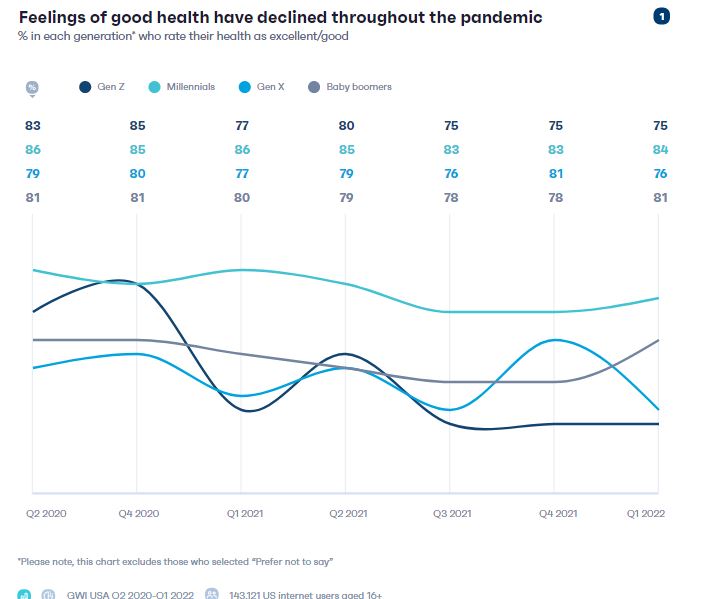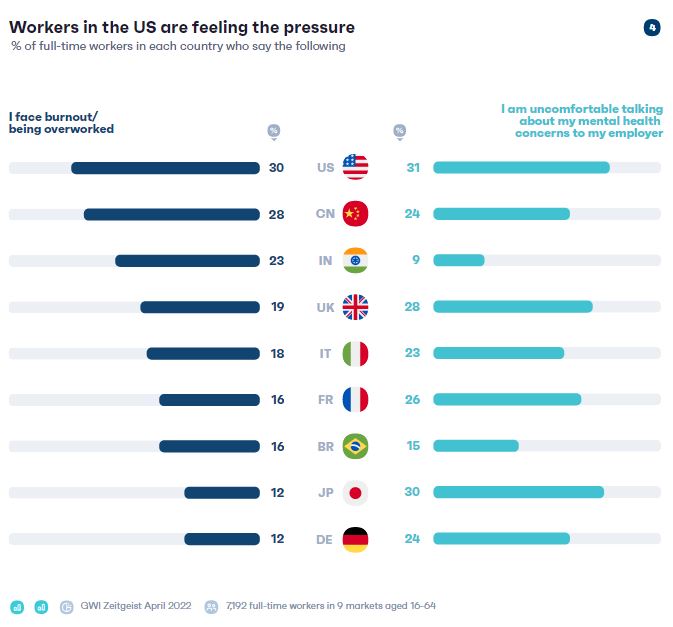The Consumer Dilemma: Health and Wellness in the US | GlobalWebIndex
Consumer Behavior |
The pandemic sped up the digitization of health and wellness services. Customers are increasingly using online services to reach their medical records, order prescriptions, as well as monitor their mental health.
With nothing but an increasing number of people of all ages owning smartwatches, Americans are becoming more active in managing their health.
When it comes to making healthy diet decisions, access is more important than education.
Despite the fact that the price of meat products has risen significantly over the past two years, low-income Americans are less likely to slightly reduce their consumption of meat than the average American, but besides vegetarian diets being cheaper, healthier, and better for the environment.
Let’s go through the Consumer Dilemma: US healthcare report to know more…
The State of US Healthcare:
Global healthcare spending is increasing, but the United States comes out on top, making up 40% of total global health spending. When compared to similar countries, US health spending per capita is more than double, whilst also research found that the US healthcare system performed poorly when compared to 10 other high-income countries.
It has been two years since the first wave of the pandemic, and in Q2 2020, there was a peak in the number of Americans concerned about infectious diseases and viruses, with 58% concerned.
The chart below from the consumer dilemma report shows the percentage in each generation who rate their health as excellent/good:

- In Q2 2020, 83% of Gen Z rated their health as excellent/good.
- 85% of Millennials said the same in Q4 2020.
- Also, 77% of Gen X in Q1 2021, said their health is excellent/good.
- However, in Q2 20221, 79% of Baby Boomers said the same too.
- Jumping to Q3 2021, 75% of Gen Z said their health is excellent/good.
- In Q4 2021, 83% of Millennials rated their health the same.
- Finally, in Q1 2022, 76% of Gen X rated their health as excellent/good.
US Mental Health:
Employers must begin to take priority mental health in their company culture, as a happier workforce is likely to be more productive, because back in 2020, workers’ daily stress reached an all-time high, according to a study of workers in 100 countries, with the United States and Canada recording the highest levels of daily stress internationally.
Workers are starting to feel the pinch as they recover from the pandemic and face increasing financial burdens.

The above chart shows the percentage of full-time workers in each country who said those statements.
30% of full-time workers in the US face burnout, on the other hand, 31% of full-time workers in the US say that they’re uncomfortable talking about their mental health concerns to their employer.
23% of full-time workers in India say they face burnout, and 9% of full-time workers in India say that they’re uncomfortable talking about their mental health concerns to their employers.
Moreover, 18% of full-time workers in Italy say they face burnout, and 23% of full-time workers in India say that they’re uncomfortable talking about their mental health concerns to their employers.
For more insights, you can check the full consumer dilemma: US healthcare in 2022!
The Table of Contents of the “ The Consumer Dilemma: Health and Wellness in the US” Report:
- Discover our data
- Key insights
- The State of US healthcare
- US mental health
- Making exercise & fitness accessible
- Making exercise & fitness accessible
- Diet and nutrition
- Appendix
- Notes on methodology
Number of Pages:
- 22 Pages
Pricing:
- Free
Methodology:
When reading this report, please note that we focus on GWI USA, which surveys over 20,000 internet users in the US aged 16+ each quarter, in addition to supplementary data from our ongoing global quarterly Core research. We also draw on GWI Zeitgeist, a recontact study that we carry out monthly in 9 markets. GWI Core is carried out among inter-net users aged 16-64 in 50 markets. Our figures are representative of the online populations of each market, not its total population. According to our own projections, 90% of the US population aged 16+ are internet users, so it’s fair to say our data reflects the online population of this market. However, in many countries in Latin America, the Middle East and Africa, and the Asia-Pacific region, low internet penetration rates can mean that online populations are more young, urban, affluent, and educated than the total population.







